How car industry innovation is propelling ASC shipbuilders
The submarines built by an Adelaide firm will spend years longer in the ocean thanks to innovative technology taken from the car industry.

SA News
Don't miss out on the headlines from SA News. Followed categories will be added to My News.
The Adelaide firm that built six Collins Class submarines is planning to extend their lifespan using innovative techniques adopted from the car industry that have slashed major service times.
In an interview with The Advertiser, ASC chief executive officer Stuart Whiley said the Osborne Naval Shipyard-based firm was designing work plans for the Collins Life of Type Extension (LOTE) program, slated to cost between $4.3bn and $6.4bn.
The complete rebuild of the six Collins Class boats, launched at Osborne between 1993 and 2001, was confirmed in June 2021 and ASC is on schedule to start in 2026 with HMAS Farncomb. Mr Whiley said the LOTE would use processes borrowed from the automotive industry that have slashed the duration of deep submarine maintenance programs, known as full-cycle docking, from three to two years.
ASC is in talks with the Navy and suppliers ahead of the program, designed to keep the Collins submarines operationally capable and available into the 2040s, supporting the transition to nuclear-powered submarines.
“We have to think about being innovative in the processes by which we deliver that. We will have to change some of the processes by which we are delivering the challenge,” Mr Whiley said.
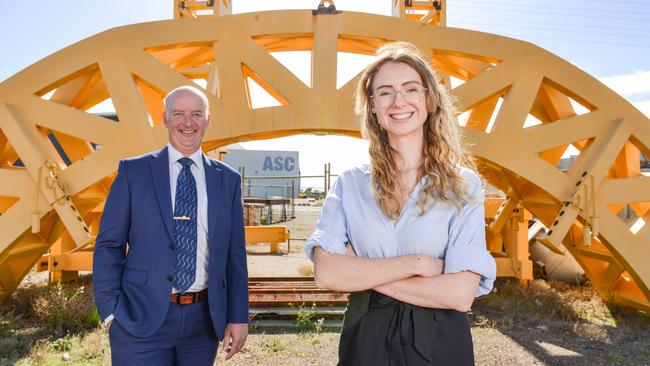
Scaffolding around submarines and workers entering through hatches with material was abandoned for the full-cycle dockings, in favour of a four-level tower and the submarines being cut apart so engines and other key components can be removed.
These are then stripped apart, rebuilt, tested and run in before being reinstalled into the submarine.
The process includes welders, engineers, pipe fitters and mechanics overhauling or refitting systems including the combat system, engines and generators.
Mr Whiley said detailed design and planning reviews for the LOTE was ongoing but the processes likely would be based on the successful full-cycle docking methods with some different concepts.
Maintenance work, akin to a service, is done at ASC West, at Perth’s Australian Marine Complex, near the Collins Class submarines’ base at Garden Island, or HMAS Stirling.
The full-cycle docking process was dramatically overhauled after the scathing 2013 Coles Review into Submarine Sustainment, which found there had been no proper sustainment system in place since the first Collins boat came into service in 1996 – 17 years beforehand.
Among 25 recommendations was reducing the full-cycle docking length from three to two years and having only one submarine at a time undergoing the major service.
Mr Whiley started at the-then Australian Submarine Corporation on November 17, 1989 – the day after the-then prime minister Bob Hawke officially opened the Osborne facility.
He said young people would be able to forge lucrative and interesting career paths from the 2020s through to the 2040s. “It’s a great opportunity to have a fantastic career in a very challenging and technically complex environment,” he said.
Among the next generation developing their skills at ASC is recent graduate mechanical engineer Nicole.
Nicole took part in a two-year program at ASC at Osborne, beginning in 2021 until March this year.
During the course, she was exposed to skills directly applicable to serving the nation’s defence interests, and learned from industry stalwarts.
“There was a recurring theme of problem solving and working with some really awesome and experienced people,” Nicole said.
“I’ve been learning a lot of practical engineering.”
And these graduates are getting hands-on experience.
“Some of my rotations were with maintenance, so I would get on the boats and look at the technical aspects,” she said. “If a pump was broken I would go on and work out how to fix it.”
Her experience has spurred her on to encourage other young women to join the industry in the future.
With ASC, she has had the opportunity to judge the Subs in Schools competition where students develop small scale working submarines.
“I think it’s so important to normalise women becoming engineers,” she said.
Chief engineer at ASC, Dan, who has been at the company for 27 years, said on-the-job training at the site was assisted with the ships just “a couple minutes walk away”.
“I can look at my drawing go on to the boat and actually see how it’s put together,” Dan said.
And ASC has been developing opportunities over the past “year and a half” for young people to fill the defence roles required in the future. “We can see going into the new space of AUKUS, the amount of engineers required to do this job properly, rigorously is extensive,” he said.
But he expects attracting young engineers to ASC will not be difficult as they boast “the most advanced technology in Australia” with which to entice them.
ASC built the Collins Class submarines under a $5bn contract signed in 1987. The first, HMAS Collins, was commissioned in mid-1996 and the sixth, HMAS Rankin, was commissioned in 2003.
A $3.5bn deal for submarine maintenance was confirmed in October 2003, with a 25-year contract for the overhaul of the Collins Class submarines built at Osborne.

These workers built our defence industry from scratch
Back in 1990, Holden was King of the Mountain in Adelaide manufacturing but the time-honoured Woodville plant was winding down.
Production of the Commodore, the car that Alan Grice drove to Bathurst victory that year, was in full swing at Elizabeth – the Australian manufacturing industry’s flagship. Operations had progressively moved there from Woodville, which started production in 1923.
A young fitter and turner, Darren, had been working on Commodores at Woodville for about nine years and was searching for a fresh challenge.
So he headed down Port Rd to the Lefevre Peninsula, where an extraordinary and unprecedented mission to safeguard Australia’s national security was taking shape.
The Osborne shipyard had opened in late 1989 as the home of the-then Australian Submarine Corporation.
Under a $5bn contract signed in mid-1987, ASC was embarking on a pioneering project to build six Collins Class submarines. It was, at the time, the nation’s largest defence contract in history.
In walks Darren, one of a rare group to have worked at ASC for more than 30 years or more.
“It was more or less a timing issue. Holden was closing down at Woodville. Around 1990 I finished at Holden and I started here in ’91. They were moving out to Elizabeth and I took the opportunity to look for a new challenge,” he says.
“I was aware of this project kicking off, so I applied, being a fitter and turner by trade. I actually came here for the interview and got the job as a fitter and turner. But they had roles going in the office area for people with trade backgrounds, and they asked if I’d be interested. So I took that on and started up in planning and inventory control type work, material, logistics and stuff like that.”
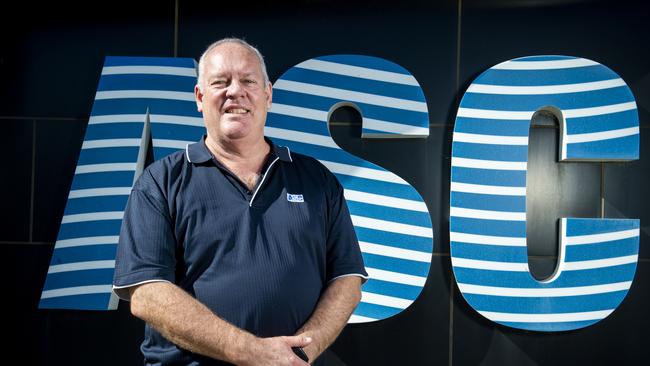
About 32 years later, Darren is the ASC’s production control lead, contributing to the sustainment program for the six Collins Class submarines that were built by ASC and commissioned between 1996 and 2003. Since then, ASC’s key job at Osborne has been to conduct full-cycle dockings – a sustainment program akin to a major service that involves effectively rebuilding the entire submarine.
ASC is about to embark upon a Life of Type Extension program of the fleet, providing Australia with submarine capability into the 2040s.
Osborne Naval Shipyard is on the brink of another transformation for another submarine project – this time to construct eight nuclear-powered submarines in a nation-building enterprise costing up to $368bn.
The impact of the AUKUS submarine construction has been likened to that of the car industry in the post-war period by Prime Minister Anthony Albanese and Premier Peter Malinauskas. “An industry that created jobs and security for communities during decades,” Albanese says.
Darren, 57, who’s seen both submarine and car manufacturing industries first-hand, understands the similarities.
“But I think the main difference is the complexity of what we do on submarines compared to motor vehicles. The amount of parts that go into making a submarine and the time and effort to build a submarine from scratch to get it into the water is a monumental task,” he says.
“Whereas in the car industry, it’s more of a production line facility. It’s fast-paced – you see them getting churned out every day but you’ve got to take many years to build a submarine.”
Then there’s the sense of mission and achievement that comes from working on a national enterprise, a high-security project to build a weapons and surveillance platform that is a linchpin of Australia’s security.
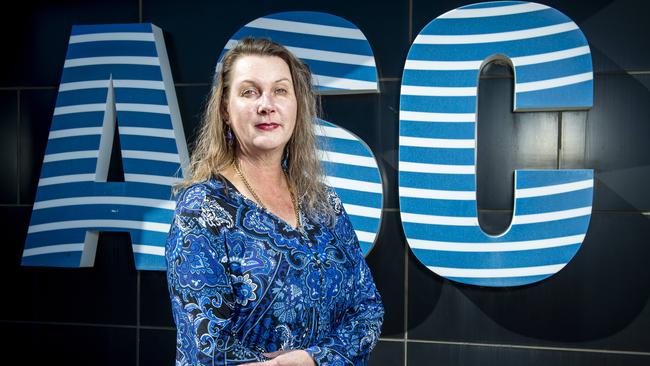
This pride extends across the ASC shipyard, from the blue-collar workers to office manager Dana, 50, who started more than 33 years ago after working part-time at Hungry Jack’s and a few months at a strata title firm. She started in the mailroom, went on to file clerk, senior file clerk, office administrator, then senior office administrator and, finally, office manager.
Asked what she’s enjoyed most about working all those years at ASC and her enduring memory, Dana simply replies: “Seeing all the subs get delivered. Just being there for every launch was just an amazing experience. Thinking that this was a job I was going to try for a couple of years and haven’t left.
“You know, what we’re really doing is defending Australia. We’re keeping the people out there safe and it’s our job to make sure the submariners come home.”
Back in the early days of the Australian Submarine Corporation, Swedish firm Kockums held a 49 per cent stake and the federal government was the majority owner. Back in February 1990, Swedish backpacker Lars started at Osborne after knocking on the door and asking for a job. He had no connection to the parent company other than his homeland.
Then aged 25, he’d been working in the finance sector in Sweden. His friends were travelling through Europe and the US but Lars wanted to see something different. He’d formed a base, of sorts, in Brisbane and was looking for work, so was drawn to a Swedish firm.
“I had absolutely no background or knowledge of submarines or anything like that.
I did contact them to see if there were any opportunities because I was immigrating to Australia. And there was nothing there because everything was local. I came here – I had other employment for a couple of years – because I’d heard about it, that in Adelaide, it was a big thing,” he recalls.
In 1990, the Osborne shipyard was more of an isolated outpost than a vast military industrial complex. “Once you drove past Port Adelaide, coming up Victoria Rd, you hardly saw any cars. If you saw one coming the other way, you almost waved,” Lars jokes.
Like any major project of its scale and complexity, the Collins Class submarine construction came under immense scrutiny. There were triumphs, like the August 1993 launch of the first-of-class Collins at Osborne.
Then there was fierce criticism, such as the boats being derided as “dud subs”. In 1998, a US navy report found the submarines, which rely on stealth, made “about as much noise as a rock concert under water”.
By 2004, an Advertiser report headlined “Dud subs no more” detailed a prestigious engineering award gained by ASC. In 2002, a Collins Class submarine, HMAS Sheean, had hunted and “sunk” a US nuclear submarine during an underwater warfare exercise off Hawaii.

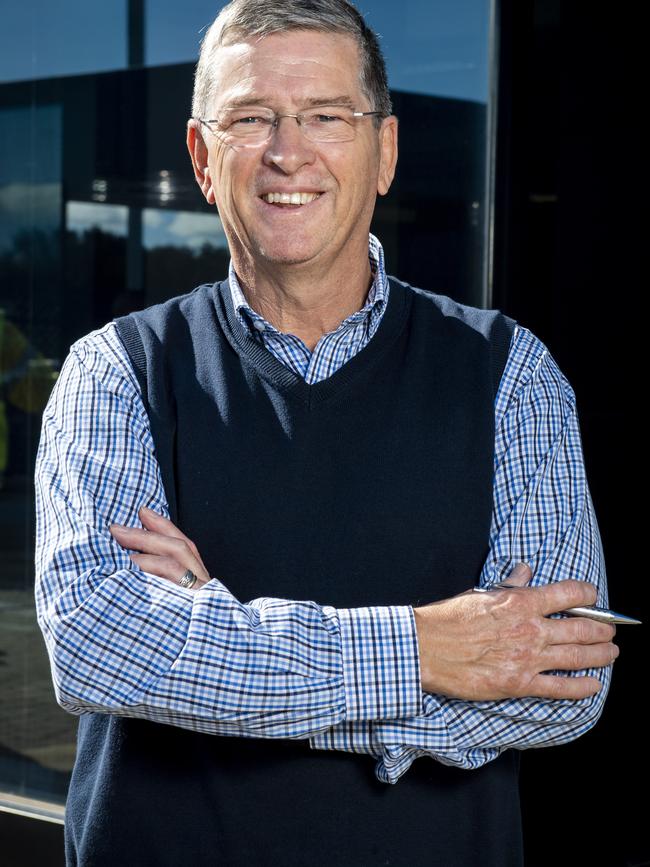
For long-time employees like Steve, a fabrication training manager who started at ASC in mid-1989 as a hull foreman, these ups and downs were discussed at work but swiftly forgotten on the job.
“It was there. It was spoken about in the smoko rooms, accounting, the offices. But as soon as you walked out, or the team walked out into the workshop, that was gone,” he says.
“It’s because the policies, procedures and the technical specifications are very specific. The welding procedures are very specific. The dimensional tolerances when you put a submarine hull together are very, very tight. You don’t have time to think about anything else. And if you do, you’re not thinking about what you need to be doing.
“So there were ups, there were downs, obviously we all lived them. But once you got on your job, whatever the job was, you were focused because of the tight tolerances, the very strict requirements to make sure that pressure hull is 100 per cent as it has been designed. So that’s how we moved through.”
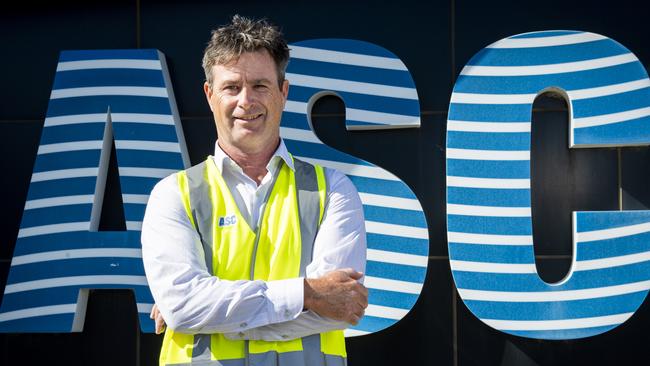
In those early days, Scott was a maintenance electrician – now he works in the office as a manager, supporting the production workforce to deliver the full-cycle dockings.
Back in early 1993, this author wrote in Messenger newspapers about his exploits as a windsurfer, which earned him a Young Citizen Award. Scott was an SA Open champion and Junior State Wave Sailor and had competed in the windsurfing world cup.
“I was quite a talented windsurfer at the time and also doing quite well here at ASC, so, yeah, I think between those two, there was a kind of recognition of some talent,” Scott recalls.
Now aged 52, he’s a mentor to younger staff and keen to pass on knowledge he’s learned since starting at ASC in mid-1991. “We always talk to young people about taking the time to learn as much as they can from the people that are already here. And not to kind of lose focus of how quick time passes and how important it is that they find their way in positions through their career,” he says.
“It’s always based on knowledge. Always being open to learn and taking the time to understand how things worked. It was always the good advice that was passed to me and I’ve passed that on to other people.”
Scott is proud of the past and confident of the future. He dismisses the historic criticism, arguing there has been a negative connotation to some things done in Australia that people assumed could have been done better overseas.
Instead, he’s looking forward to the Osborne shipyard’s bright future.
“I think for the workforce the main feeling that we have is not only be proud for the people that are here now, it’s knowing that there’s jobs for kids in the future that want to be engineers, that want to be tradespeople. When good news comes out, there’s always that feeling of pride. But really, the thought is for the future, the opportunities that we’ll have for people in the future,” he says.
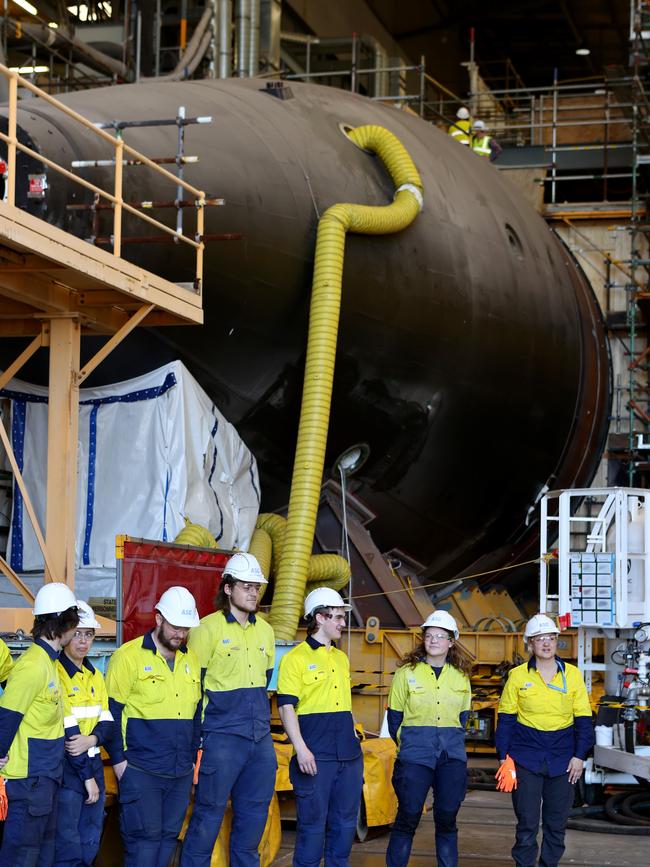
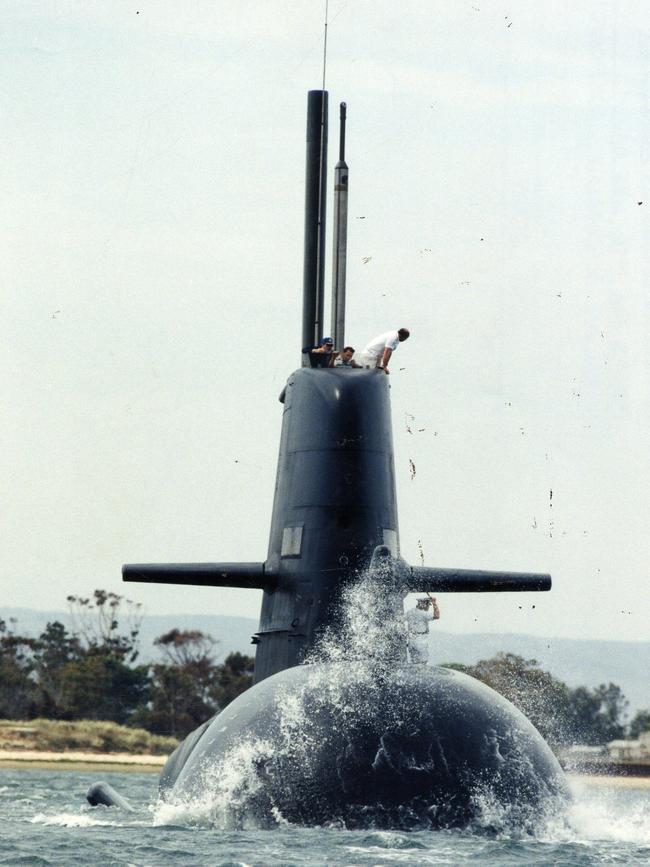
That future might involve a family dynasty. Asked if he could imagine his children or grandchildren working on the nuclear submarine project about to flourish at Osborne, Scott is quite definite.
“Oh, absolutely, In fact, my son’s thinking about doing an apprenticeship as a boilermaker welder. So, the business of building submarines might be something that can be passed on in the family for generations,” he says.
Just like the Prime Minister said of the car industry, the submarine construction and sustainment industry has created jobs and security for decades. It’s about to do so for many more to come.
■ (Surnames have been omitted from the article in line with national security practices)
More Coverage
Originally published as How car industry innovation is propelling ASC shipbuilders




